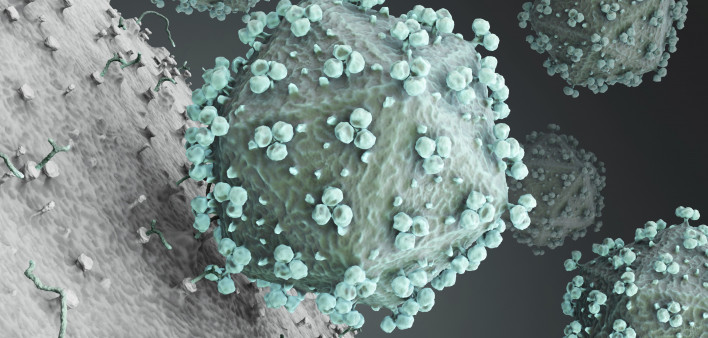After an individual with HIV receives a stem cell transplant to treat blood cancer, such as leukemia or lymphoma, there is a critical window during which the virus can essentially reassert itself, transferring from the old immune system to the new one to maintain a lifelong infection.
To date, one person—Timothy Ray Brown—has definitely been cured of HIV and a second person very likely has been cured of the virus by receiving what’s known as an allogeneic stem cell transplant from a donor with a genetic variation that causes CD4 cells to be resistant to the virus. This is known as being homozygous for the CCR5-delta32 genetic mutation. Such a transplant involves using chemotherapy or radiation to kill off the patient’s cancerous immune cells, by replacing them with the new cells from the donor, essentially giving them that person’s immune system.
Numerous other attempts to cure people with HIV through similar methods have failed. The question is, why has it proved so difficult to replicate Brown’s case in others?
As described in in the journal Science, European researchers studied 16 people with HIV who received a stem cell transplant to treat blood cancer. Five of them received their transplants from a donor who was homozygous for the CCR5-delta32 genetic mutation.
The scientists sought to gain a better understanding of what occurs in the body during the period immediately after a stem cell transplant in people with HIV. They looked in particular at the first weeks after the transplant—a period when the recipient’s immune cells and those of the donor coexist.
During this time, the investigators observed considerable activation of CD4 cells. Such activation, they theorized, could promote nonreplicating, or latent, cells harboring HIV to reactivate and produce new virus that could reseed the infection in the multiplying CD4 cells from the donor.
The investigators found that immune cells from the donor developed responses to specific HIV proteins. This means that the donor immune cells came into contact with HIV as the cells were expanding in the body and had learned to react against the virus.
Thus, the study authors posit, they had confirmed the existence of a window period during which the donor immune cells can acquire the existing HIV infection in the recipient’s body.
“Together with the results of previous studies, these results show a weak point that may explain why allogeneic stem cell transplants may not completely remove the virus from the body, despite a drastic reduction in the number of infected cells,” study coauthor Julian Schulze zur Wiesch, MD, a senior physician at the University Medical Centre Hamburg-Eppendorf in Germany, said in a press release.
“Additional immunotherapy or gene therapy may be required to achieve ongoing, spontaneous control of HIV infection in people with HIV after allogeneic stem cell transplantation,” he added.
To read the study abstract, click here.
To read a press release about the study, click here.







Comments
Comments